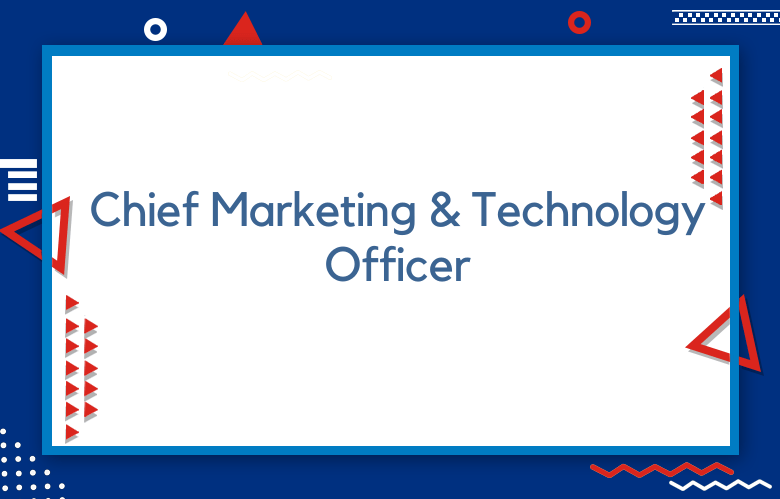Chief Revenue Officer (CRO) Role and Responsibilities

The Chief Revenue Officer (CRO) is a senior-level executive responsible for driving revenue growth and optimizing all revenue-generating activities across the organization. The CRO plays a critical role in developing and executing the company’s revenue strategy and ensuring that all revenue-related departments, such as sales, marketing, and customer success, are aligned and working together effectively.
Chief Revenue Officer (CRO) Role and Responsibilities
The Chief Revenue Officer (CRO) is a senior executive responsible for driving revenue growth and optimizing all revenue-generating activities across the organization. The CRO’s primary role is to develop and execute a comprehensive revenue strategy that aligns with the organization’s overall business objectives and supports sustainable, profitable growth.
The Chief Revenue Officer (CRO) is a strategic leader responsible for driving revenue growth and optimizing all revenue-generating activities across the organization. The CRO plays a critical role in ensuring the organization’s financial success, and its responsibilities encompass a wide range of areas, including strategy development, team leadership, process optimization, and data analysis.
The CRO’s Responsibilities
The CRO’s responsibilities typically include:
It develops and executes the organization’s revenue strategy, including defining the vision, goals, and initiatives to drive revenue growth.
We lead and coordinate all revenue-generating departments, including sales, marketing, and customer success, to ensure alignment with the organization’s overall revenue goals.
We analyze and optimize the sales process, including identifying bottlenecks, improving productivity, and developing sales enablement strategies are developing and implementing go-to-market strategies for new products and services, including pricing, positioning, and messaging.
Overseeing the development and execution of marketing campaigns that drive demand and generate qualified leads for the sales team.
Collaborating with the finance team to forecast and track revenue, identify trends, and adjust strategies. We are identifying new revenue opportunities and channels, including partnerships, licensing, and expansion into new markets.
She is leading the development of the organization’s pricing strategy, including pricing optimization, discounting policies, and value-based pricing models.
They are driving the development of a customer-centric culture within the organization, including promoting customer success and retention initiatives.
We establish and monitor key performance indicators (KPIs) for revenue-generating activities, including sales quotas, marketing ROI, and customer retention rates.
Communicating the organization’s revenue strategy and performance to the board of directors, investors, and other key stakeholders is recruiting, developing, and retaining top talent for revenue-generating roles, including sales, marketing, and customer success.
We are collaborating with other senior executives to ensure alignment of revenue strategies with overall business objectives.
I stay current on industry trends and best practices in revenue generation and share insights and recommendations with the organization’s leadership team.
The CRO’s role is crucial in driving revenue growth and optimizing all revenue-generating activities across the organization. The CRO must have a deep understanding of revenue generation best practices, strong leadership skills, and the ability to drive change and innovation within the organization.
Unleashing the CRO: The Powerhouse Behind Revenue Generation
Revenue generation is a critical aspect of any business, and the Chief Revenue Officer (CRO) is the powerhouse behind it. The CRO is a senior executive responsible for driving revenue growth and optimizing all revenue-generating activities across the organization.
The CRO’s role is crucial in today’s competitive business landscape. They are responsible for ensuring that the organization achieves its revenue goals and maintains a sustainable and profitable revenue stream. By investing in the CRO role and prioritizing revenue growth, organizations can differentiate themselves in the marketplace, build strong customer relationships, and drive long-term business success.
Unleashing the CRO
To unleash the CRO’s full potential, organizations must provide them with the resources, support, and authority they need to succeed. Here are some tips for unleashing the CRO:
Provide a clear mandate and authority
The CRO should have a clear mandate and authority to drive revenue growth. This includes the authority to lead cross-functional teams, allocate resources, and make strategic decisions.
Establish clear goals and metrics.
The CRO should have measurable goals and metrics for driving revenue growth. This includes setting annual revenue targets, establishing key performance indicators (KPIs), and regularly monitoring progress against these metrics.
Foster collaboration
The CRO should foster collaboration across all revenue-generating departments, including sales, marketing, and customer success. This includes establishing cross-functional teams, promoting open communication, and encouraging cooperation on revenue-generating initiatives.
Invest in technology
The CRO should invest in technology and tools that enable more effective revenue generation, such as customer relationship management (CRM) systems, marketing automation tools, and predictive analytics.
Develop talent
The CRO should develop the talent and skills of the revenue-generating team, including providing training, mentorship, and career development opportunities.
Promote a customer-centric culture.
The CRO should promote a customer-centric culture within the organization, including fostering a deep understanding of customer needs and preferences and driving initiatives that enhance the customer experience.
The Sherlock Holmes of Sales: A Closer Look at the CRO Role
The Chief Revenue Officer (CRO) is often called the “Sherlock Holmes of Sales” due to their keen ability to analyze data, identify trends, and develop strategies that drive revenue growth. As the head of revenue generation, the CRO is critical in ensuring that the organization achieves its financial goals and maintains a sustainable and profitable revenue stream.
The CRO’s responsibilities go beyond just driving sales; they also include optimizing the entire revenue generation process, from lead generation and customer acquisition to customer retention and expansion. The CRO’s keen analytical skills and deep understanding of the market enable them to develop and execute strategies that drive short-term sales and build long-term customer relationships.
Revenue Maestro: Mastering the CRO Role and Driving Growth
The Chief Revenue Officer (CRO) is critical in driving revenue growth and ensuring the organization’s financial success. As the “Revenue Maestro,” the CRO must master many responsibilities to succeed in this challenging role. In this article, we will explore some of the key responsibilities of a CRO and offer insights on how to master this critical role and drive growth for your organization.
Developing a Comprehensive Revenue Strategy
The CRO is responsible for developing a comprehensive revenue strategy that outlines the organization’s goals, target markets, and revenue generation tactics. This strategy must align with the organization’s overall business objectives and be flexible enough to adapt to changing market conditions. To master this responsibility, the CRO should:
- Conduct a thorough market analysis to identify trends, opportunities, and potential threats.
- Develop a deep understanding of the organization’s customers, needs, and preferences.
- Collaborate with other senior executives to ensure alignment of the revenue strategy with overall business objectives.
- Continuously monitor and adjust the revenue strategy based on performance data and market changes.
Leading Cross-Functional Teams
The CRO leads cross-functional teams, including sales, marketing, and customer success, to execute the revenue strategy and drive revenue growth. Mastering this responsibility requires strong leadership skills and the ability to motivate and inspire teams to achieve their goals. To succeed, the CRO should:
- Develop each team’s goals, objectives, and key performance indicators (KPIs).
- Establish effective communication channels and encourage collaboration among teams.
- Foster a culture of accountability, where each team member understands their role in driving revenue growth.
- Continuously monitor and assess team performance, providing feedback and support as needed.
Analyzing Data and Trends
The CRO analyzes data and trends to identify new revenue opportunities, assess the effectiveness of current revenue generation tactics, and adjust the revenue strategy as needed. Mastering this responsibility requires strong analytical skills and the ability to use data to inform strategic decision-making. To succeed, the CRO should:
- Develop a robust data analysis framework tocriticalack key metrics and KPIs related to revenue generation.
- Use data to identify patterns, trends, and insights that can inform strategic decisions.
- Continuously monitor and assess the effectiveness of revenue generation tactics and adjust the strategy as needed.
Collaborating with Other Senior Executives
The CRO collaborates with other senior executives to ensure alignment of the revenue strategy with overall business objectives. Mastering this responsibility requires strong interpersonal skills, political savvy, and the ability to influence and negotiate with other stakeholders to achieve the organization’s goals. To succeed, the CRO should:
Establish strong relationships with other senior executives, including the CEO, CFO, and CMO.
Communicate effectively the importance of revenue generation and its impact on overall business performance.
The Strategic Revenue Driver: Exploring the Responsibilities of a CRO
The Chief Revenue Officer (CRO) role has become increasingly critical as organizations seek to navigate today’s complex business landscape. The CRO drives revenue growth and optimizes all revenue-generating activities across the organization. This strategic role requires leadership, analytical, and interpersonal skills, and a deep understanding of the organization’s customers, markets, and industry trends.
Developing a Comprehensive Revenue Strategy
The CRO’s primary responsibility is to develop a comprehensive revenue strategy that aligns with the organization’s overall business objectives. This strategy is the foundation for all revenue-generating activities across the organization and must be data-driven, customer-centric, and adaptable to changing market conditions. The CRO must also collaborate with other senior executives to ensure alignment of the revenue strategy with overall business objectives.
Leading Cross-Functional Teams
The CRO leads cross-functional teams, including sales, marketing, and customer success, to execute the revenue strategy and drive revenue growth.
This requires excellent leadership, communication, and collaboration skills and the ability to motivate and inspire teams to achieve their goals. The CRO must also develop and implement sales enablement tools, training, and processes to optimize sales and increase sales productivity.
Analyzing Data and Trends
The CRO analyzes data and trends to identify new revenue opportunities, assess the effectiveness of current revenue generation tactics, and adjust the revenue strategy as needed.
This requires a deep understanding of the organization’s customers, markets, and industry trends and the ability to use data and analytics to inform strategic decision-making. The CRO must also develop and manage key performance indicators (KPIs) to track the organization’s revenue performance and identify areas for improvement.
Building and Maintaining Relationships with Key Stakeholders
The CRO builds relationships with key stakeholders, including customers, partners, and industry influencers, to drive revenue growth and enhance the organization’s reputation.
This requires excellent interpersonal skills, networking, and solid partnerships with critical stakeholders. The CRO must also identify and implement new technologies and innovations that support revenue growth, such as customer relationship management (CRM) systems, marketing automation tools, and predictive analytics.
Conclusion
The Chief Revenue Officer (CRO) is a senior executive role focusing on driving revenue growth and optimizing revenue generation. The CRO’s responsibilities include developing and executing the organization’s revenue strategy, leading cross-functional teams to implement revenue initiatives, analyzing revenue performance metrics, collaborating with other leaders within the organization, fostering a customer-centric culture, building partnerships with key stakeholders, communicating the revenue vision and strategy, leading the revenue team, and identifying and championing new technologies and innovations.
The CRO plays a crucial role in today’s business landscape. They are responsible for ensuring that the organization achieves its revenue goals and maintains a sustainable and profitable revenue stream. The CRO must have a deep understanding of revenue management best practices, strong leadership skills, and the ability to drive organizational change and innovation.



